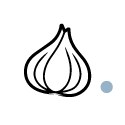
Get Your Emails Over the Dam and Past the SPAM
It may be hard to believe that with all the various communications tools our there today, emails are still the best way to interact and grow with your customers.
Email is not old school
- 3 billion email accounts that send 196 billion emails every day
- 91% of consumers check their email daily
- Email is a channel that you own
- 77% of consumers prefer email for marketing communications
- Email lets you be highly personal
- Email has a marketing ROI of 4,300%
Source: Radicati and Vero
Whether it’s a Transactional email such as a password reset or shipping notification, or a Marketing email such as a newsletter or sales promotions, emails are quite efficient and effective in these communications.
However, with all the emails we send, we still run the risk of not getting to the right person, and even worse, being marked as SPAM.
As we consult with many our NJ-based companies regarding their digital marketing strategies, we have found several fundamentals that work best to get your message over the dam and past the SPAM. These tips are not just for the New Jersey companies we work with, of course, but can be applied to any company from any state.
There are certainly some critical email foundations and structures that need to be adhered to such as legal requirements, feedback loops, list management and blacklist mitigation, but we find that the essence of good emails come down to what we call Email Enlightenment.
Email Enlightenment
Are you sending the right message to the right person at the right time and at the right frequency?
The right message will have clear subject lines that make recipients want to open the email. They will be branded correctly meaning if your brand is XYZ Company and you are sending from Hotmail you have confused the branding. And ISPs (Internet Service Providers) can open your messages and determine if you are adhering to this. Also, never send your message from a “Do Not Reply” address. You should always want to hear from your customers, so let them reply to you.
The right person on your email list is someone who wants to receive your message. Avoid purchased lists or automatically signing up people to your email lists. Recipients need to be in charge of what they receive and they need to opt-in for that.
The right time of day to send messages has blurred with the advent of mobile as people get messages all the time. However, they may not engage with your message until a certain part of the day. If you track opens, you may see a second time when a message is retrieved, such as the evening when people may have more time to listen to your message. Keep track of those stats and adjust your distribution times accordingly.
The right frequency involves a good sending cadence. For example, recipients may expect to see your message at a certain time of the week, such as Monday mornings. When you keep changing that delivery time, you lose consistency and attention. And you run the risk of being marked as SPAM. Also, be conscious of how many messages you send a week. Too many emails can cause fatigue. It’s important to understand your overall user engagement through standard open and click metrics.
You can also let recipients tailor their preferences and have them choose what email streams and types of email they would like to receive. All this helps you have a better relationship not only with a prospect/customer but also with your ISP who monitors the flow of email and looks for consistencies.
Most importantly, be transparent and honest with your recipients. This is the best way to avoid the SPAM.




